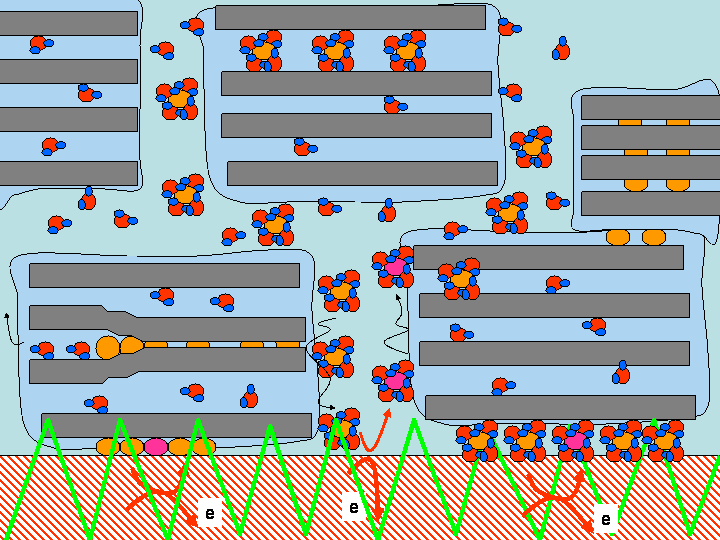|
Figure 1. Coating clays onto an electroactive planar waveguide allows investigation of the clay film in several dimensions for two reasons. The electrochemical perturbation probes the entire diffusion sampled depth of the clay film. The optical signal probes only within the evanescent wave depth which is of the order of 100 nm. The optical signal is composed of two parts the steady state signal and the electromodulated signal. The electromodulated signal responds only to a probe molecule that is within the evanescent wave depth AND confined (non-diffusing) to that depth. The planar waveguide was built by Azza Wagdy.
|

